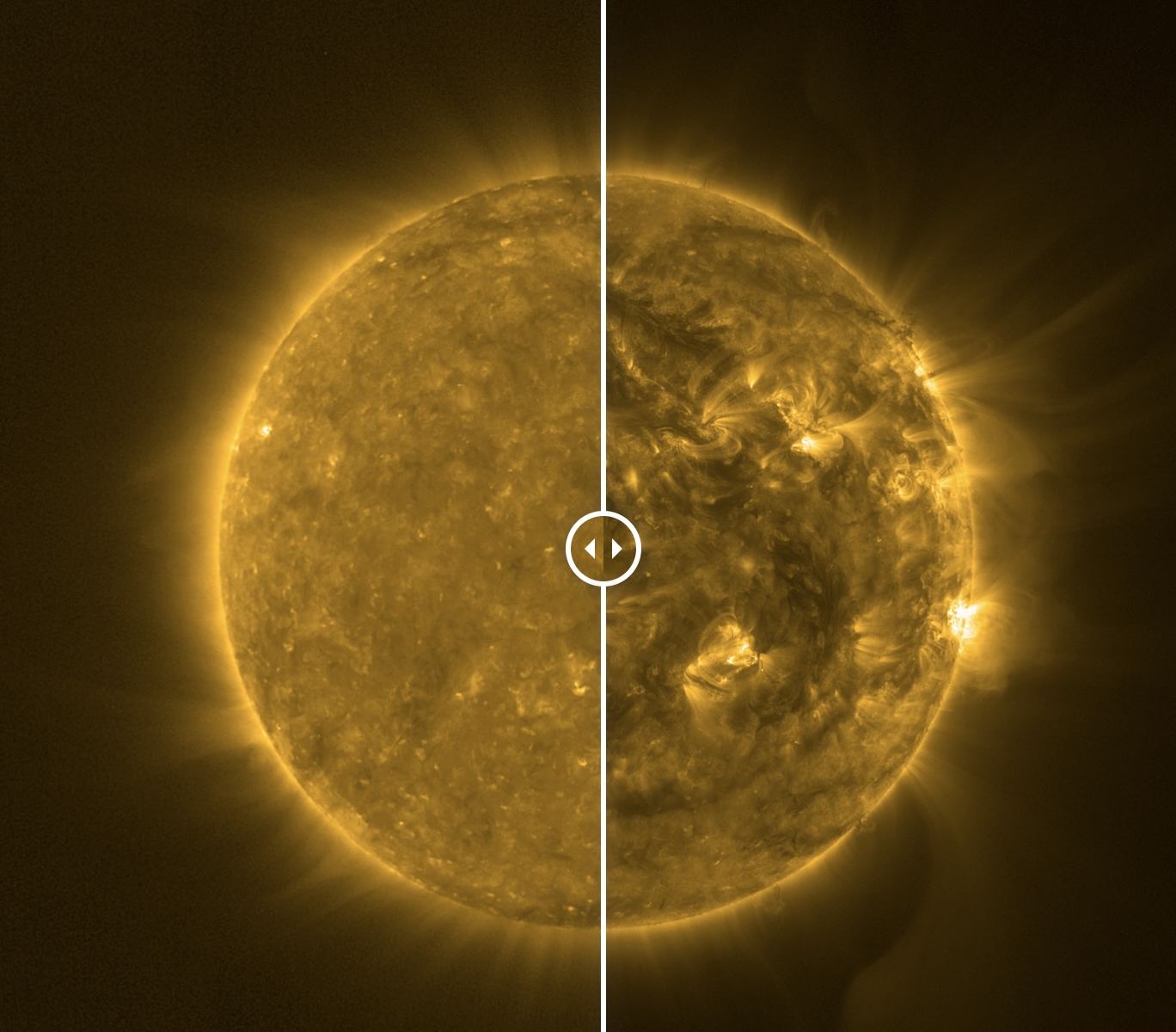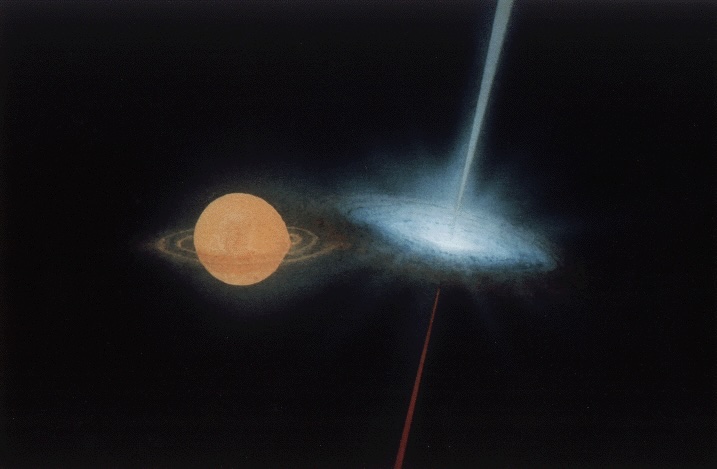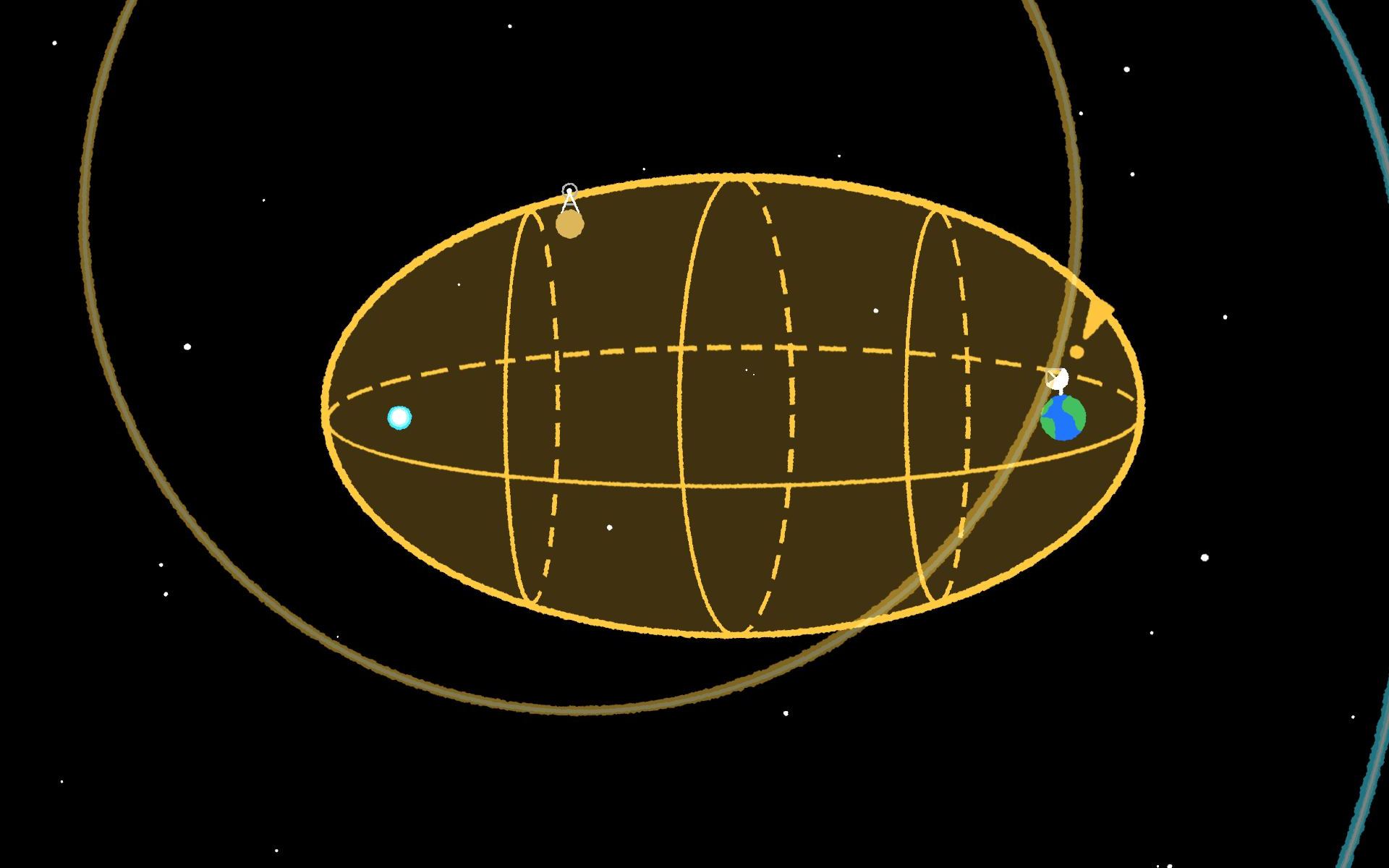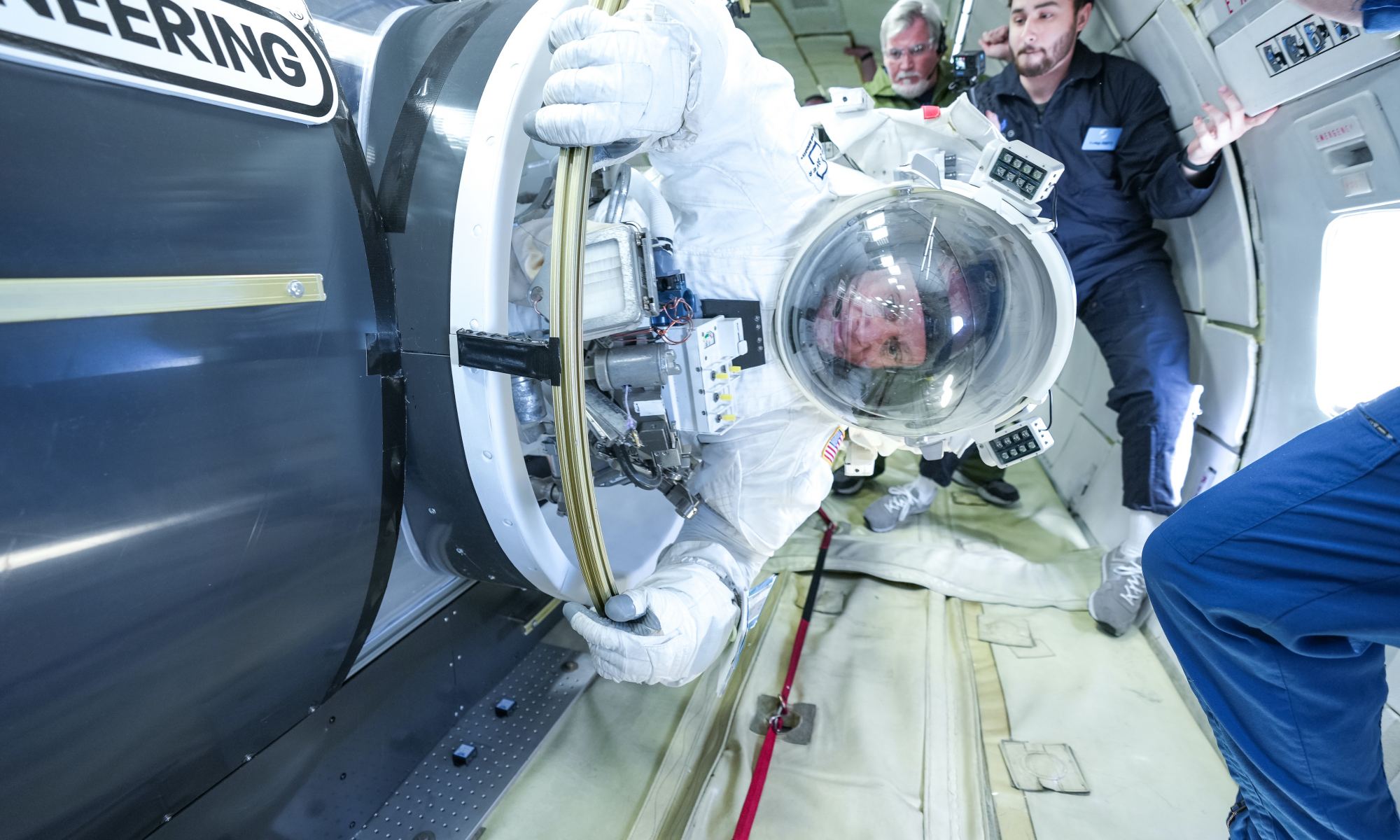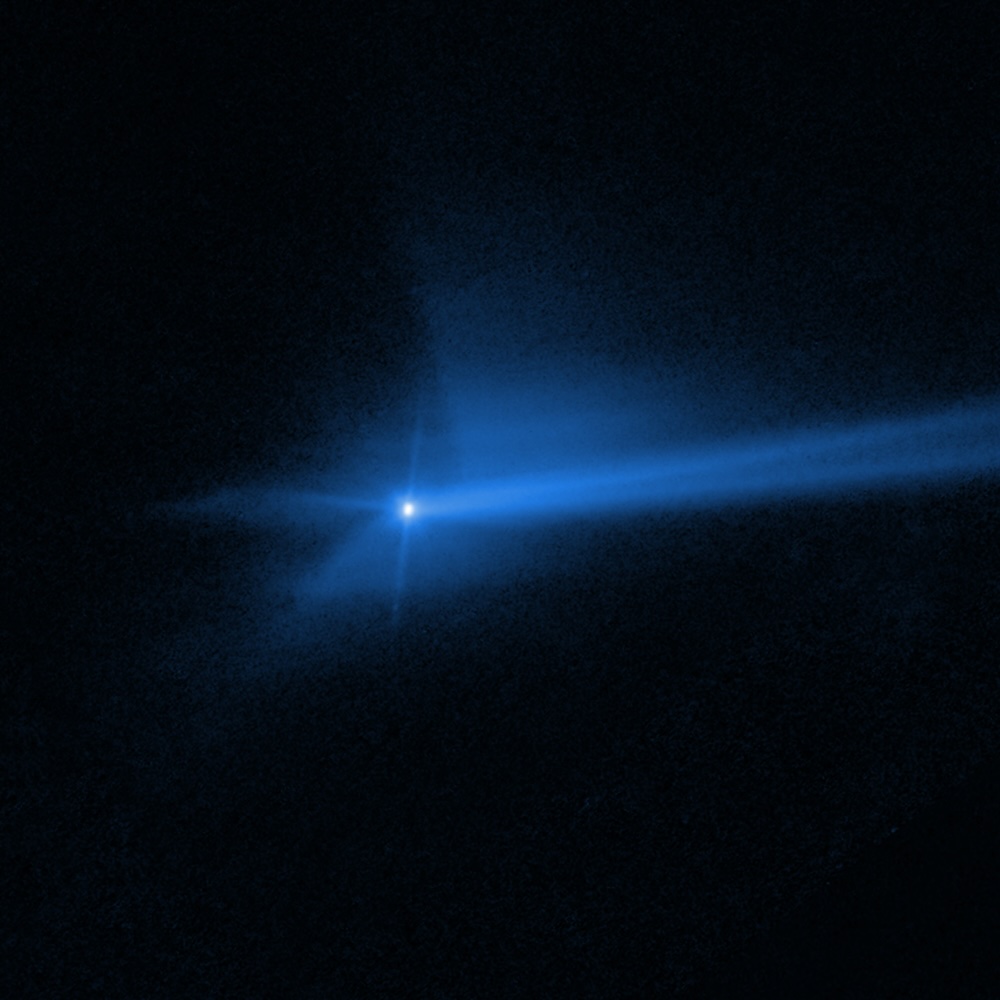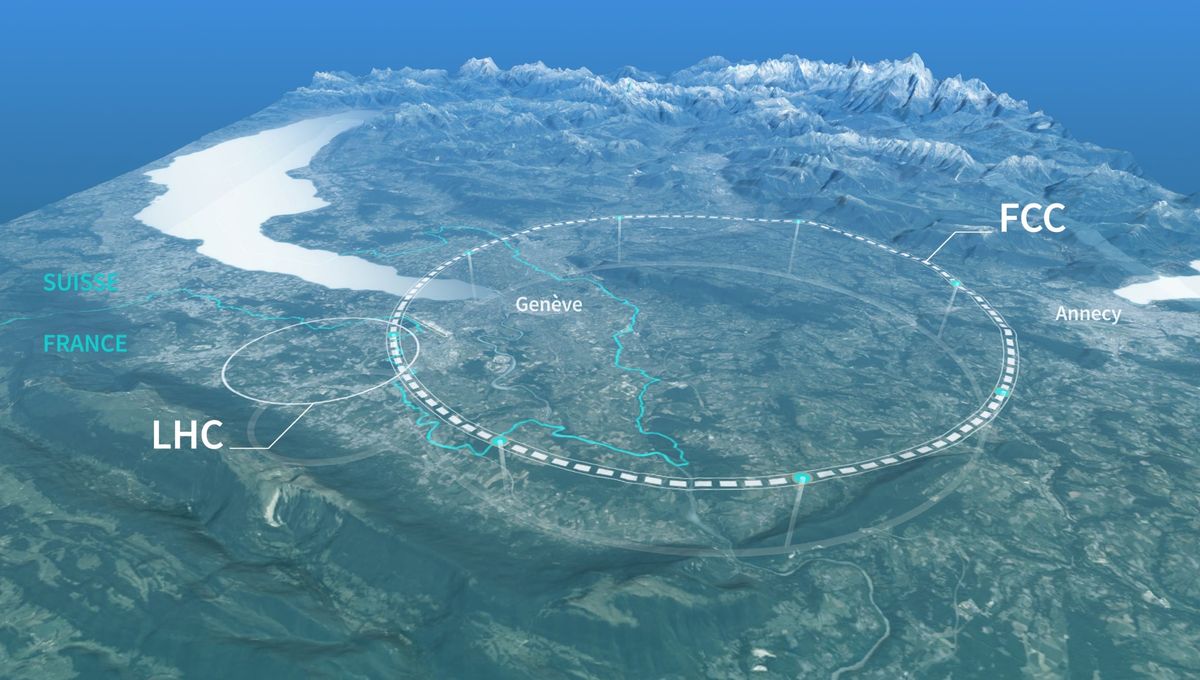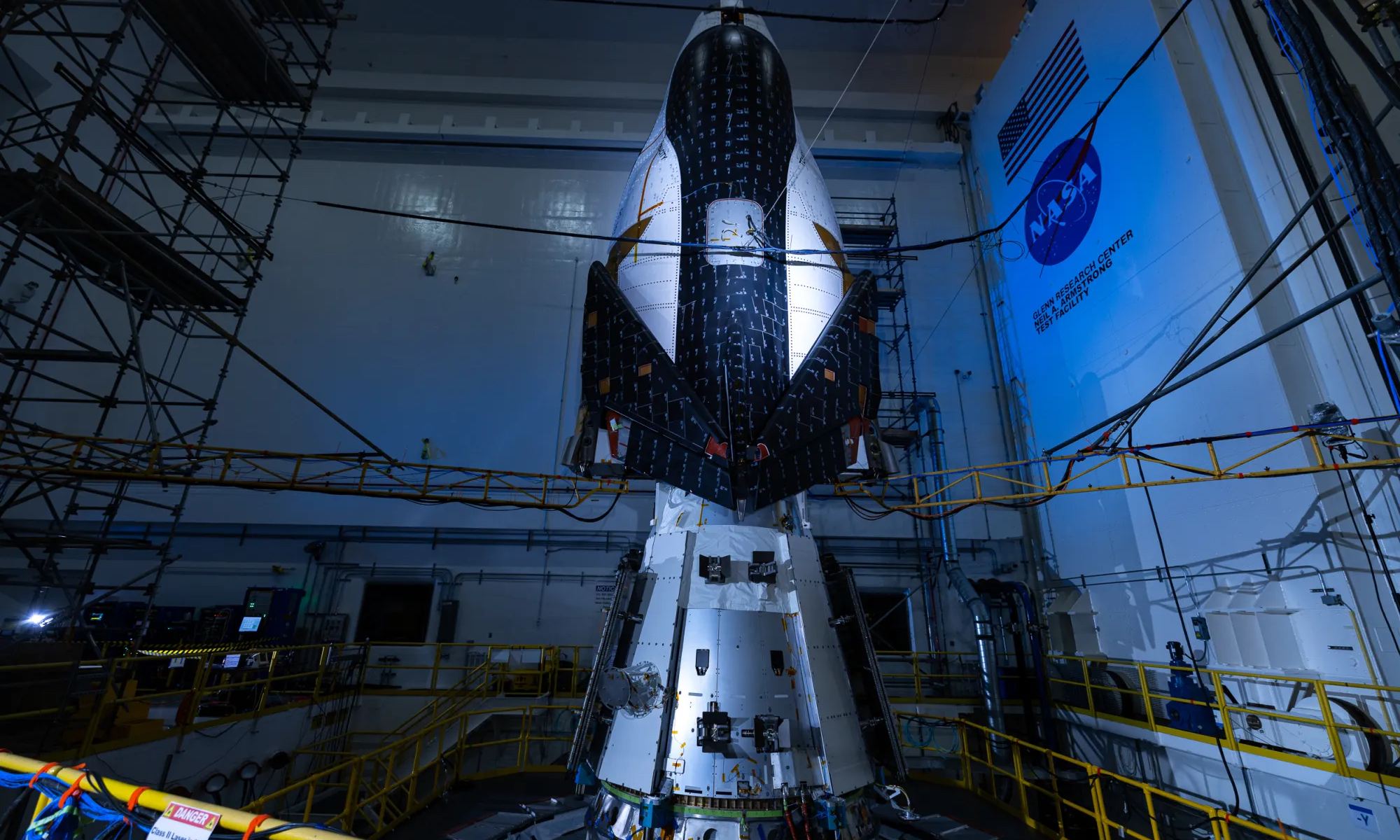Space debris is a thing.. It seems whether we explore the Earth or space we leave rubbish in our wake. Thankfully, organisations like Astroscale are trying to combat the problem of debris in space with a new commercial debris inspection demonstration satellite. Named ADRAS-J, the satellite – which is now in orbit – is hunting down an old Japanese upper stage rocket body which was launched in 2009. It will approach to within 30 metres to study the module from every angle and work out how it can be safely de-orbited by a future mission.
Continue reading “Astroscale’s Satellite is Now Chasing Down a Real Piece of Space Debris”Look at How Much the Sun Has Changed in Just Two Years
The solar cycle has been reasonably well understood since 1843 when Samuel Schwabe spent 17 years observing the variation of sunspots. Since then, we have regularly observed the ebb and flow of the sunspots cycle every 11 years. More recently ESA’s Solar Orbiter has taken regular images of the Sun to track the progress as we head towards the peak of the current solar cycle. Two recently released images from February 2021 and October 2023 show how things are really picking up as we head toward solar maximum.
Continue reading “Look at How Much the Sun Has Changed in Just Two Years”What are the Differences Between Quasars and Microquasars?
Quasars are fascinating objects; supermassive black holes that are actively feasting on material from their accretion disks. The result is a jet that can outshine the combined light from the entire galaxy! There are smaller blackholes too that are the result of the death of stars and these also sometimes seem to host accretion disks and jets just like their larger cousins. We call these microquasars and, whilst there are similarities between them, there are differences too.
Continue reading “What are the Differences Between Quasars and Microquasars?”The SETI Ellipse Tells Us Where to Search for Extraterrestrial Civilizations
Of all the questions that remain unanswered, the question of life in the Universe is surely the one that captures our attention the most. In a Universe whose observable edge is 46 billion light years away, is it even conceivable that we are alone, the sole planet among the millions and perhaps billions that are out there, where life has evolved, an oasis of life in the cosmic ocean. In the search for alien civilisations, researchers have proposed that it may be possible to use bright galactic events like supernovae to act as a focal point for civilisations to announce their presence!
Continue reading “The SETI Ellipse Tells Us Where to Search for Extraterrestrial Civilizations”Next Generation Spacesuit Gets Tested in Weightlessness
Considerable effort goes into the design of space suits and space agencies across the world are always working on improvements to enhance safety and mobility of the designs. NASA is now working with Collins Aerospace to develop their next generation spacesuit for the International Space Station. The new designs are tested extensively and recently, the new design was subjected to a ZeroG flight on board a diving aircraft.
Continue reading “Next Generation Spacesuit Gets Tested in Weightlessness”Water Found on the Surface of an Asteroid
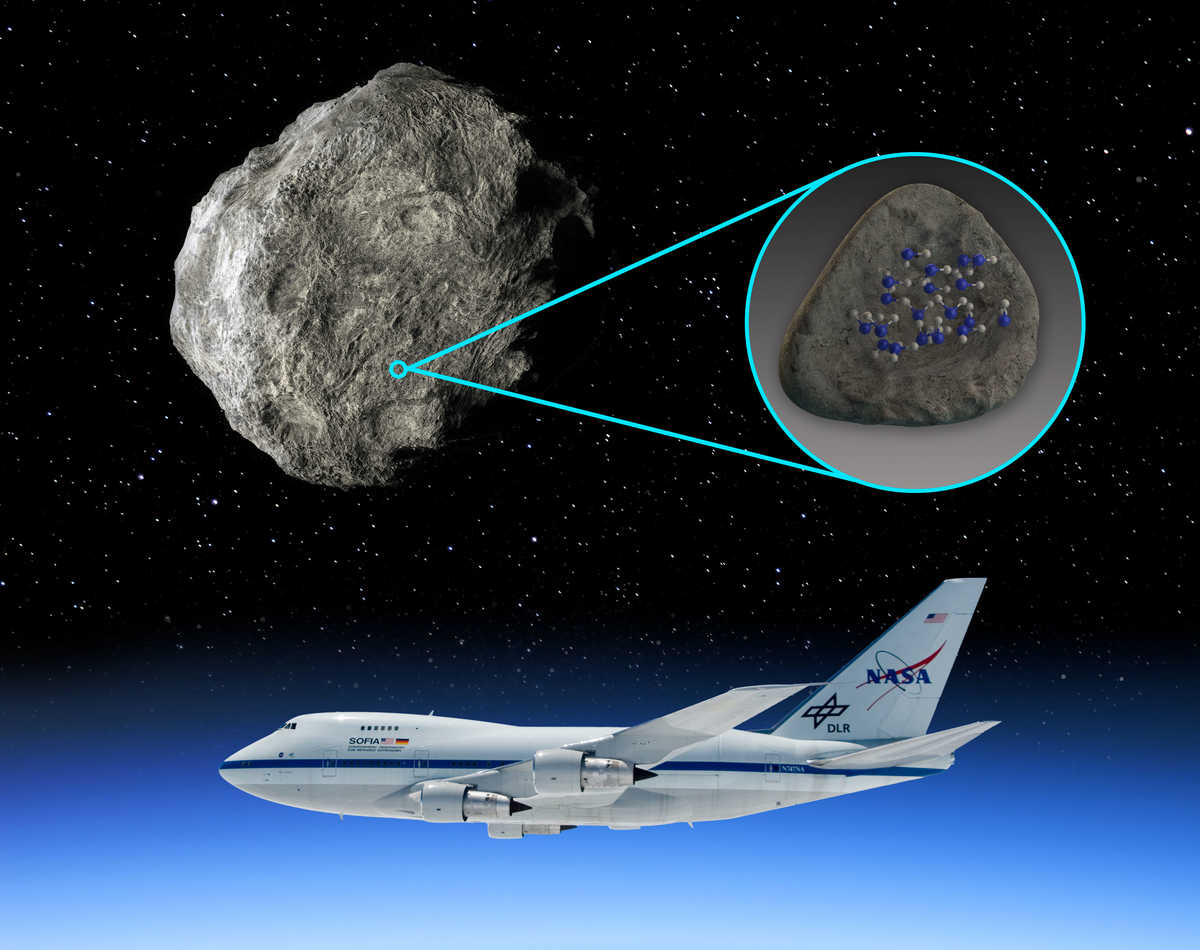
Our Solar System is a collection of objects from planets and moons to comets and asteroids. It’s thought there are upwards of 1 million asteroids orbiting the Sun and it was thought that any water present on them should have evaporate long ago. A recent study using data from the SOFIA infrared telescope discovered water on the asteroids Iris and Massalia.
Continue reading “Water Found on the Surface of an Asteroid”Could We Live Without Kilonovae?
It’s a classic statement shared at many public outreach events…’we are made of stardust’. It is true enough that the human body is mostly water with some other elelments like carbon which are formed inside stars just like the Sun. It’s not just common elements like carbon though for we also have slighly more rare elements like iodine and bromine. They don’t form in normal stars but instead are generated in collisions between neutron stars! It poses an interesting question, without the neutron star merger event; ‘would we exist?’
Continue reading “Could We Live Without Kilonovae?”What Happened to All Those Boulders Blasted into Space by DART?
It was a $325 million dollar project that was intentionally smashed to smithereens in the interest of one day, saving humanity. The DART mission (Double Asteroid Redirection Test) launched in November 2021 on route to asteroid Dimorphos. Its mission was simple, to smash into Dimorphos to see if it may be possible to redirect it from its path. On impact, it created a trail of debris from micron to meter sized objects. A new paper analyses the debris field to predict where they might end up.
Continue reading “What Happened to All Those Boulders Blasted into Space by DART?”CERN Wants to Build an Enormous New Atom Smasher: the Future Circular Collider
One of my favourite science and engineering facts is that an underground river was frozen to enable the Large Hadron Collider (LHC) to be built! On its completion, it helped to complete the proverbial jigsaw of the Standard Model with is last piece, the Higgs Boson. But that’s about as far as it has got with no other exciting leaps forward in uniting gravity and quantum physics. Plans are now afoot to build a new collider that will be three times longer than the LHC and it will be capable of smashing particles together with significantly more energy.
Continue reading “CERN Wants to Build an Enormous New Atom Smasher: the Future Circular Collider”NASA Gives Dreamchaser the Shakedown
It’s been a while since NASA has had a spaceplane on the launchpad but this now feels closer than ever again. Their new prototype cargo spaceplane known as Dream Chaser is now undergoing vibration and vacuum testing at the Neil Armstrong test facility. The tests sound a little strange perhaps but on launch and during re-entry it will most definitely experience shaking during these phases of the flights.
Continue reading “NASA Gives Dreamchaser the Shakedown”

